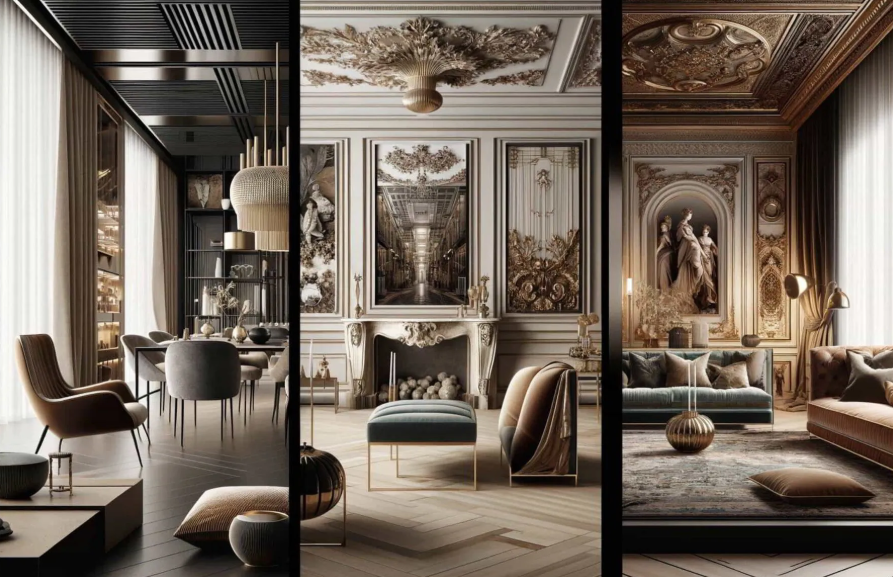Key Takeaways
- Discover how small changes can significantly impact your space’s luxury feel.
- Learn which elements to focus on for a sophisticated design, such as lighting and color schemes.
- Explore tips on incorporating technology seamlessly into elegant settings.
Table of Contents
- Why Luxury Design Matters
- The Role of Lighting in Setting the Mood
- Choosing a Refined Color Palette
- Incorporating High-Quality Materials
- Integrating Modern Technology Successfully
- Adding Personal Touches for Uniqueness
- Additional Resources on Design
Why Luxury Design Matters
Creating a luxurious living space is more than just using expensive items; it’s about evoking a sense of sophistication and comfort that transcends everyday living. Whether designing a new home or updating an existing one, luxury design can transform your space into a personal sanctuary where every corner reflects elegance and functionality.
When you invest in luxury design, you’re choosing to enhance not just the beauty of your space but also the quality of your daily life. A well-designed, luxurious space facilitates comfort, invites relaxation, and transforms routine activities into cherished experiences. By focusing on elements such as lighting, color schemes, and quality materials, you can achieve an aesthetic that’s elegant yet accessible and inspiring without being ostentatious.
The Role of Lighting in Setting the Mood
Lighting plays a pivotal role in defining a room’s ambiance and overall feel, making it one of the most impactful elements in luxury design. A sophisticated lighting scheme can highlight architectural features, create illusions of space, and influence a room’s mood. A cleverly layered combination of ambient, task, and accent lighting yields a tiered effect that adds depth and texture to interiors. Even a 30A real estate agent Richard Jabbour acknowledges that the design intricacies significantly contribute to a property’s overall value and aesthetic appeal, enhancing its marketability and livability.
Soft, warm lights make spaces feel cozy and inviting, perfect for living areas and bedrooms, while cooler, brighter options may suit kitchens or offices where functional visibility is key. Furthermore, innovative lighting solutions offer unparalleled flexibility, allowing homeowners to modify lighting scenarios based on the time of day or activity. As highlighted by Architectural Digest, incorporating dimmable options and strategically placed fixtures can drastically transform an environment, morphing it from everyday functional to opulently elegant with just a flick of a switch.
Choosing a Refined Color Palette
The colors within a room can significantly influence its overall mood and perception of luxury. A refined color scheme is fundamental in defining luxury décor, dictating not just the mood but also the perceived spaciness and features of a room. Neutral tones such as whites, greys, and beiges offer a timeless and sophisticated canvas, providing an elegance that can be effortlessly enhanced with splashes of more vivid hues.
Incorporating bold hues like royal blue, emerald green, or even a deep wine red introduces vibrancy and a touch of drama. These hues act as focal points without overwhelming the subtler elements. By carefully balancing these colors, designers create sophisticated and harmonically engaging spaces. Colors don’t just paint a visual picture; they evoke emotion and wellness, ultimately fostering relaxing and visually appealing environments.
Incorporating High-Quality Materials
The choice of materials in luxury design is as crucial as any other aesthetic decision. Materials like marble, hardwood, and velvet not only look stunning but also offer superior durability and a tactile sense of luxury. These premium materials serve as constant reminders of the elegance and quality craftsmanship that define true luxury interiors.
These materials transcend mere opulence; they provide functional beauty that withstands the passage of time, proving both an aesthetic and a financial investment. A guide by Houzz beautifully illustrates the employment of high-quality materials, showcasing their timelessness and unique ability to adapt to evolving design trends. Such investments ensure a design’s longevity and the enduring satisfaction they bring.
Integrating Modern Technology Successfully
As technology continues to advance rapidly, the integration of smart home features into luxury designs becomes increasingly seamless. These advancements go beyond mere convenience—they enhance the living experience itself. From voice-activated systems that allow for effortless control over lighting and temperature to integrated sound and security features that ensure both comfort and peace of mind, technology offers modern solutions to age-old problems.
The secret to successfully integrating technology into luxury designs is ensuring it complements rather than dominates the aesthetic. Seamless installations, intuitive user interfaces that blend into surroundings, and tech solutions that interact harmoniously with design elements ensure that technology enhances rather than detracts from the luxury experience.
Adding Personal Touches for Uniqueness
Every luxury design is complete with the infusion of personal elements that make a house a home. Family heirlooms, carefully curated artwork, and bespoke furniture infuse unique characters into luxurious designs. These pieces narrate personal stories, adding warmth and personality to any space.
These personal touches allow a space to transcend the impersonal showroom appearance, becoming a true reflection of the owner’s style and story. Combining unique elements with luxurious materials and pristine design forms a cohesive, inviting atmosphere reflecting personal taste and nuanced elegance.
Additional Resources on Design
To deepen your understanding and gather inspiration for creating such elegant spaces, consider exploring resources like Homes & Gardens. This resource offers expert advice, trends, and ideas that empower you to transform ordinary surroundings into stylish, sophisticated interiors.

